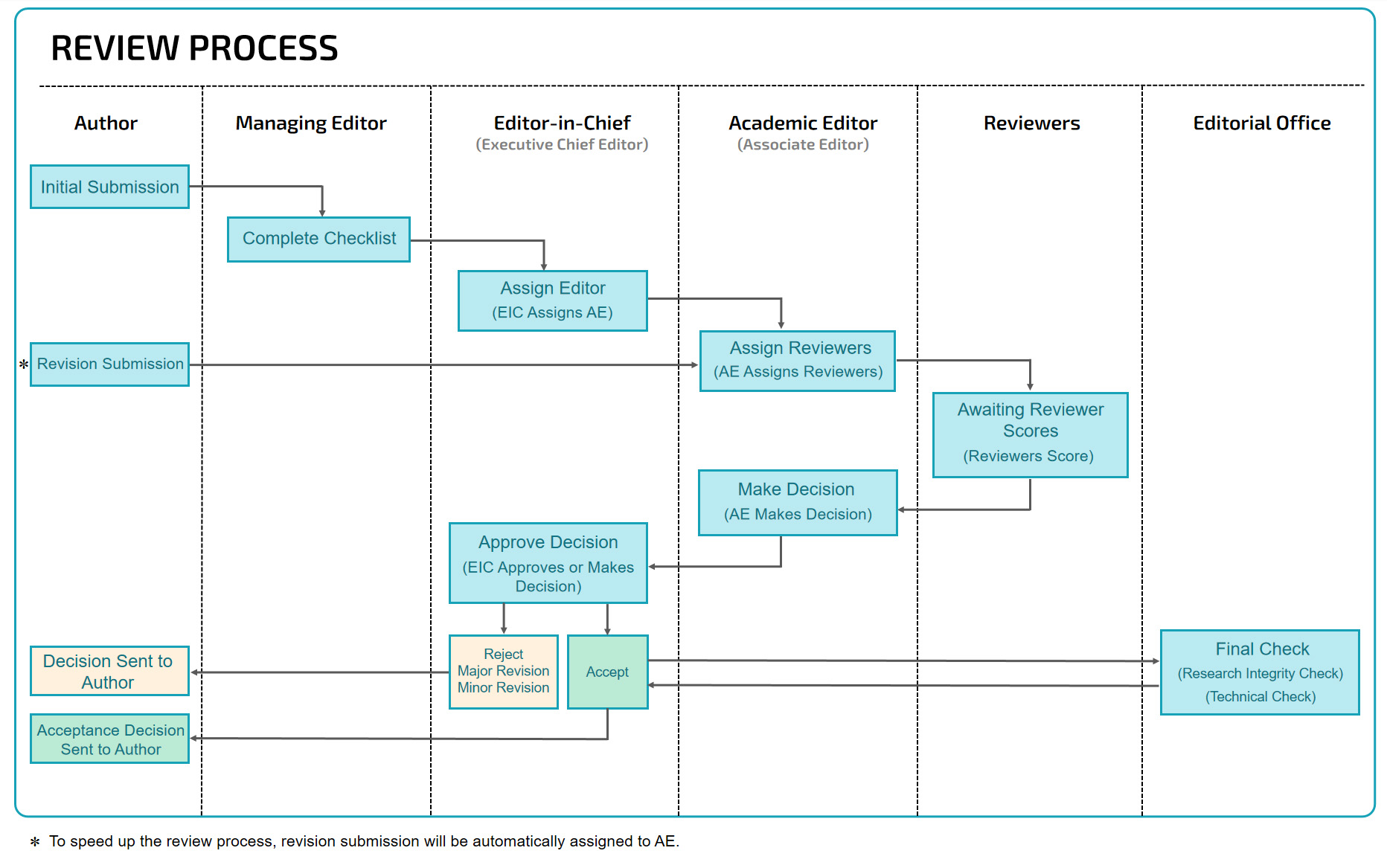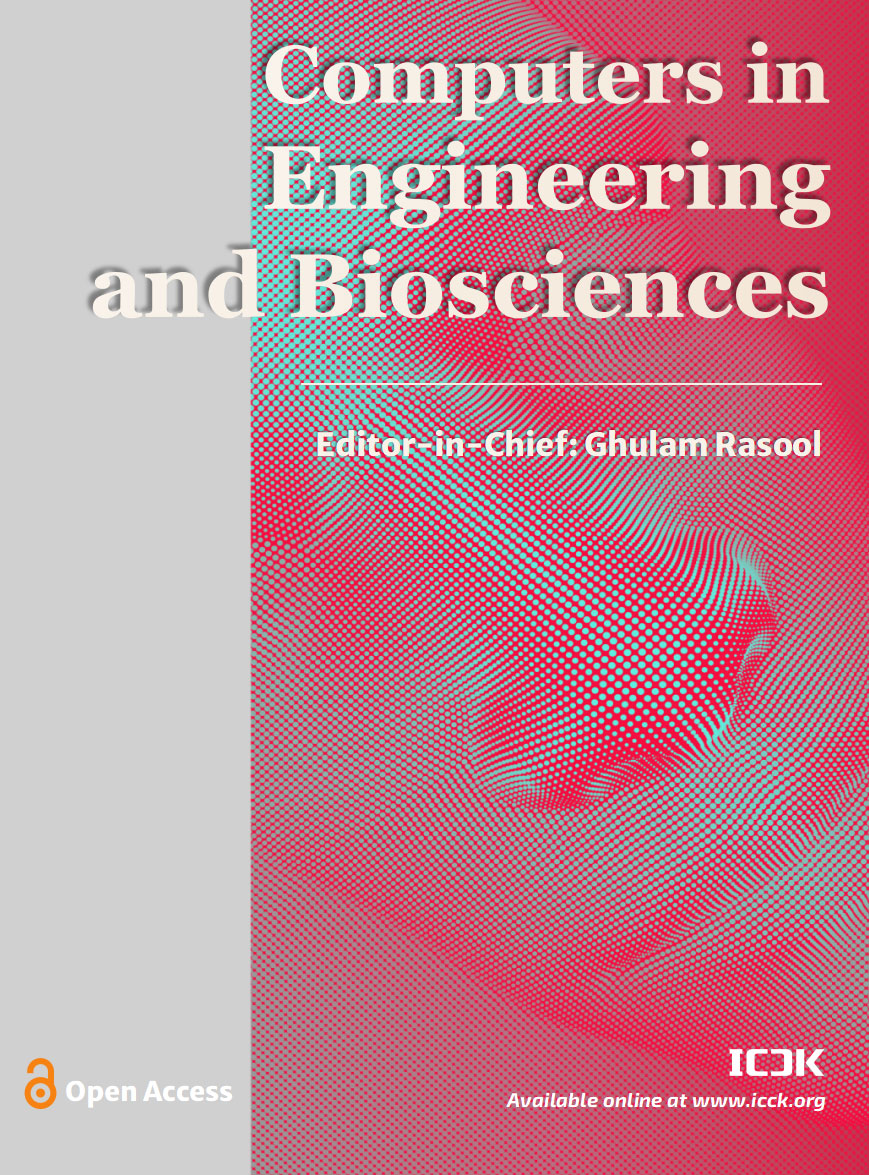Editorial Process
Computers in Engineering and Biosciences (CEB) implements a rigorous peer review process, which in most cases is a single-blind assessment with at least two independent reviewers, followed by a final acceptance/rejection decision by the Editor-in-Chief. The Editor-in-Chief is responsible for the academic quality of the publication process, including approving or rejecting the decision of the Academic Editor/Associate Editor. The publication ethics and publication malpractice statement regulate ethical behavior based on Committee on Publication Ethics (COPE)´s Best Practice Guidelines and is supplemented by ICCK’s Instructions for Authors.
A flow chart of the review process is given below:

Initial Checks
All manuscripts submitted to the Editorial Office are subject to an initial screening by a Managing Editor before being forwarded to the Editor-in-Chief. This check ensures that the manuscript is properly formatted, complies with the journal’s ethical policies, and falls within the journal’s scope. Manuscripts that fail to meet these basic requirements may be rejected or returned to the authors for revision and resubmission. No judgment on the significance or potential impact of the work is made at this stage. Rejection decisions during the initial check are verified by the Managing Editor.
Assignment to Editor-in-Chief
Manuscripts that pass the initial check are forwarded to the Editor-in-Chief, who may assign the manuscript to a responsible academic editor for peer review. If a manuscript does not meet the journal’s quality standards, the Editor-in-Chief may decide to reject it directly. The Editor-in-Chief may also request revisions before initiating the peer-review process.
Assignment to Academic Editor
The Academic Editor is responsible for evaluating the academic quality of the manuscript and selecting at least two independent reviewers with relevant academic or technical expertise for manuscripts that meet the requirements. All reviews are conducted under a single-blind model. The Academic Editor may also directly recommend rejection of the manuscript to the Editor-in-Chief or request the authors to revise the manuscript.
Peer Review and Evaluation
Reviewers evaluate the manuscript based on originality, scientific rigor, clarity, relevance, methodology, and its contribution to the research community. They are asked to provide detailed comments and a recommendation (Accept, Minor Revision, Major Revision, or Reject).
Editorial Decision
Based on at least two independent review reports, the Academic Editor makes a recommendation to the Editor-in-Chief, who makes the final decision.
Revision and Re-review (if necessary)
Authors invited to revise must address all reviewer comments point-by-point. Revised manuscripts may be assigned to the previous reviewers for re-evaluation, especially in cases of major revisions. Authors are expected to submit their revised version within 30 days.
Final Check
For manuscripts accepted by the Editor-in-Chief, the Editorial Office will conduct a final technical and ethical review. Upon successful completion of this review, authors will receive an official acceptance notification. Manuscripts that do not meet the required standards will be returned to the Editor-in-Chief for further handling.
Production and Publishing
Once accepted, the manuscript will undergo copyediting, typesetting, and proofreading, and will be published in both online and print formats.




